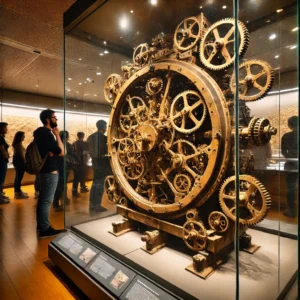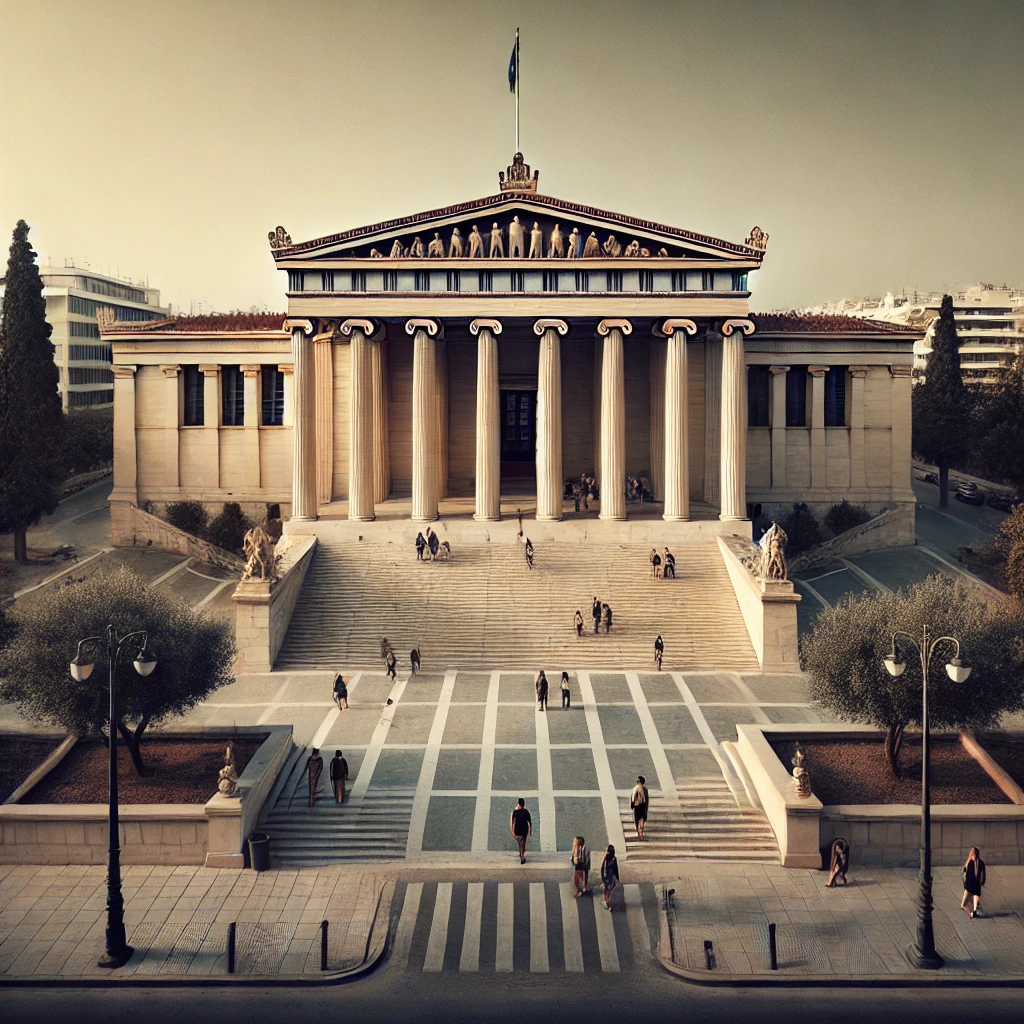In the heart of Athens, away from the Acropolis’ towering ruins and the buzz of Plaka’s narrow streets, lies a treasure trove of history and culture: The National Archaeological Museum. Often overshadowed by the city’s more famous landmarks, this museum is an unmissable stop for anyone with even the slightest curiosity about Ancient Greece. Here, the story of human civilization comes alive, offering an immersive experience that takes you through thousands of years of history, from the Neolithic era to the late Roman period.
A Journey Through Time: What Makes This Museum Special?
As one of the largest and most important museums in the world, the National Archaeological Museum houses over 11,000 artifacts, representing a vast timeline of Greek history. Each exhibit tells its own story, not just of kings, warriors, and gods, but also of everyday life—how people lived, loved, and worshipped in times long gone.
Entering the museum feels like stepping into a time machine. From the moment you set foot in the vast marble halls, you are transported back to ancient times. The museum’s layout is designed to guide you through history in a chronological flow, making it easy to explore the evolution of Greek civilization. Whether you’re gazing at the golden treasures of Mycenae or admiring the lifelike sculptures of the Classical period, each section unveils something new and fascinating.
Must-See Exhibits: Highlights of the Museum
With so much to see, it’s easy to feel overwhelmed. However, some key exhibits stand out as absolute must-sees:
1. The Mask of Agamemnon

Arguably the museum’s most famous artifact, this golden funerary mask dates back to the 16th century BCE and was discovered in the royal tombs at Mycenae by the archaeologist Heinrich Schliemann. While originally believed to belong to the legendary King Agamemnon, it’s now understood to predate his era. Still, standing before this gleaming face is like staring directly into the past.
2. The Antikythera Mechanism

Often referred to as the world’s first computer, the Antikythera Mechanism is an ancient device used to predict astronomical positions and eclipses for calendrical purposes. Found in a shipwreck off the coast of the island of Antikythera, this complex and mysterious instrument offers insight into the technological advancements of ancient Greece, long before modern machinery.
3. The Statue of Poseidon (or Zeus)
This larger-than-life bronze statue of either Zeus or Poseidon, recovered from the sea near Cape Artemision, captures the strength and grace of Greek gods. With his arm poised to throw a trident or thunderbolt, the god appears frozen in mid-action. The lifelike detail of his muscular form is a testament to the skill of ancient Greek sculptors and the reverence they had for their deities.
4. The Mycenaean Collection
The Mycenaean civilization flourished in Greece from approximately 1600 to 1100 BCE, and the museum’s collection of artifacts from this era is awe-inspiring. Among the treasures are intricately decorated pottery, bronze weapons, and the iconic Lion Gate Relief, a masterpiece of Mycenaean stone carving.
5. The Vases of the Geometric Period
A room filled with beautifully painted vases dating back to the Geometric period (900-700 BCE) offers a look into early Greek art. These vases are adorned with intricate patterns and depictions of scenes from mythology and daily life. The development of these designs signals the beginning of a more artistic and structured Greek society.
Hidden Gems: Lesser-Known Exhibits Worth Exploring

While the main attractions draw the most attention, there are many hidden gems scattered throughout the museum.
- The Egyptian Collection: Tucked away in a corner of the museum, this fascinating collection features artifacts from ancient Egypt, including mummies, statues, and sarcophagi. It’s a reminder of Greece’s deep connections with other Mediterranean cultures.
- The Stathatos Collection: A beautiful exhibit featuring jewelry, pottery, and household items from the Hellenistic and Roman periods. This collection highlights the daily lives of ancient Greeks and how they adorned themselves with intricate gold, silver, and bronze items.
- The Prehistoric Collection: Take a step even further back in time with artifacts from the Neolithic and Early Bronze Ages. The Cycladic figurines—abstract, minimalist sculptures from the Cycladic islands—are a highlight, representing some of the earliest known artistic expressions in human history.
Immersing Yourself in Ancient Greece
The National Archaeological Museum offers more than just artifacts—it offers a true immersion into the world of Ancient Greece. The layout and curation are designed to take you on a narrative journey, making you feel as though you’re walking through the ages. From the rich grave goods of the Mycenaean kings to the pristine marble statues of Athens’ classical era, each room unveils a new chapter in Greece’s incredible history.
One of the most powerful experiences is walking through the Sculpture Gallery. Lined with majestic statues, this space showcases the development of Greek sculpture from rigid, archaic forms to the fluid, lifelike figures of the Classical and Hellenistic periods. It’s an evolution of artistic expression that mirrors the cultural and political growth of Greece itself.
Another unmissable feature of the museum is the temporary exhibits, which often delve into specific themes or archaeological finds in greater detail. These rotating exhibitions ensure that even returning visitors will find something new and intriguing to discover.
Tips for Visiting the National Archaeological Museum
- Give Yourself Time: The museum is vast, so plan for at least three hours to explore its major highlights. For a more in-depth visit, dedicate a full day to take in every corner.
- Visit Early or Late: Like many popular attractions in Athens, the museum can get crowded. Arrive early in the morning or late in the afternoon to avoid the rush and enjoy a more peaceful visit.
- Don’t Forget the Museum Café: After hours of exploring, take a break at the museum’s lovely café, which offers a peaceful garden setting. It’s the perfect place to reflect on all you’ve seen.
Discover More with Our Digital City Tour Map
Athens is a city steeped in history, and the National Archaeological Museum is just one of its many cultural treasures. To make the most of your visit to the city, download our digital city tour map. It’s packed with expert insights, historical facts, and guided routes that will help you discover Athens’ ancient wonders, including hidden gems that most visitors miss. Whether you’re exploring the Acropolis, the ancient Agora, or the charming streets of Plaka, our map ensures that your journey through Athens is as immersive and informative as possible.





